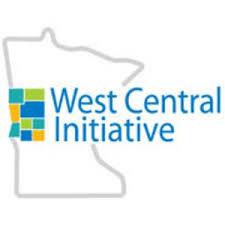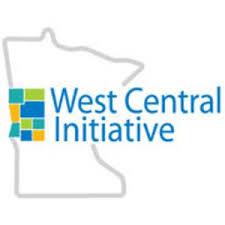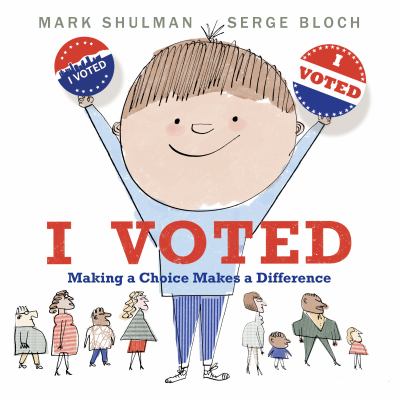The Policies in Play series takes a closer look at the recently passed state legislative policies that affect early care and education. We work with partners to find out what these policies look like in action and how they impact Minnesota children and families.
 Like many communities across the state and especially in Greater Minnesota, the West Central region is experiencing a child care shortage. West Central Initiative (WCI) serves the counties of Becker, Clay, Douglas, Grant, Otter Tail, Pope, Stevens, Traverse, and Wilkin, and is the area designated as Minnesota’s Economic Development Region IV. Child care providers are leaving the field for a variety of reasons, from low compensation to reaching retirement age, making infant care in many areas especially difficult to find.
Like many communities across the state and especially in Greater Minnesota, the West Central region is experiencing a child care shortage. West Central Initiative (WCI) serves the counties of Becker, Clay, Douglas, Grant, Otter Tail, Pope, Stevens, Traverse, and Wilkin, and is the area designated as Minnesota’s Economic Development Region IV. Child care providers are leaving the field for a variety of reasons, from low compensation to reaching retirement age, making infant care in many areas especially difficult to find.
 Because WCI heard from their region that improving access to child care was crucially important, they decided to “flip the switch” on financial supports to the field. When the state Department of Employment and Economic Development (DEED) announced the Request for Proposal for Greater Minnesota child care grants, WCI was ready to apply. Greg Wagner, Business and Economic Development Director at WCI, spoke with me to explain the process and impact on child care providers in the area.
Because WCI heard from their region that improving access to child care was crucially important, they decided to “flip the switch” on financial supports to the field. When the state Department of Employment and Economic Development (DEED) announced the Request for Proposal for Greater Minnesota child care grants, WCI was ready to apply. Greg Wagner, Business and Economic Development Director at WCI, spoke with me to explain the process and impact on child care providers in the area.
In the past few years, Wagner notes that there has been a shift in the workforce. Baby boomers are starting to retire. As jobs open up and need to be filled, the community needs to be attractive to new workers. One key component to this is child care. Parents need a safe, conveniently-located place for their children to go while they work. Child care is one of the main components discussed when the region talks about economic development needs. As more boomers retire and communities continue to compete for workers, quality child care is a key element in the equation. The demand for child care is so high right now some child care providers who are in the licensing process, but not open yet, already have their enrollment at capacity.
The DEED grants are the result of legislation passed in 2016. Acknowledging that many communities are losing child care providers at rapid rates, legislators directed a total of $500,000 to support child care in Greater Minnesota. Applicants had to propose ways “to increase the supply of quality child care providers in order to support regional economic development”. The response was enthusiastic. DEED received 15 proposals totaling $1.3 million. Eight programs including WCI were awarded money, ranging from $1,500 to $125,000.
Because recipients of the grants had to provide a dollar-for-dollar match to the state funds received, WCI used $51,500 of foundation money plus $50,000 from DEED. They decided to offer forgivable loans to child care providers. Individual applicants for the loans submitted a business plan and financial documents explaining how they would use the money to help improve their program and reduce the child care shortage. WCI then awarded up to $3,500 to each provider to implement their plan. Every month, providers send in a coupon and $100 of the loan is forgiven. As long as the provider stays in business for three years, the entire amount of the loan is forgiven.
The response was exceedingly positive. Within two weeks, WCI received 31 applications for the forgivable loans. Because not every provider requested the maximum amount, WCI was able to award all 31 applicants.
Loan recipients represented a variety of circumstances. Of the 31 who were approved, six are new providers who are just starting up their child care. Out of those who are existing providers, they have a range of experience from two to 20+ years in the field. Just over half (16) of the providers are Parent Aware rated, or in the process of receiving their rating. In total, 350 licensed child care slots were supported with the funding.
Providers will use the money for a variety of needs. Egress windows, smoke detectors, and fencing were some of the requests received. Providers also requested new equipment, educational toys, and a swingset. One wanted a storage shed to keep toys in good shape.
The response to the loans was a success largely because WCI implemented the same program the year before, using $70,000 from their own loan fund pool. Providers, licensors, and ECI coordinators knew of the program and were excited to see it available again. The biggest challenge for WCI was handling the rapid influx of applications.
For programs participating in Parent Aware, loan closing costs were waived. If providers weren’t enrolled in Parent Aware, they received information about the program at the loan closing. WCI wanted to share this helpful resource and encourage providers to consider it as a path to quality.
Wagner explained that one of the main benefits of the forgivable loans is to help providers balance their duties of running a business and helping families. Providers need improvements to their programs. The loans allow them to make the improvements without raising rates.
While the child care shortage continues to be a major issue, the DEED grants used for forgivable loans are one way the local community is implementing creative solutions.
By Marie Huey, Civic Engagement Specialist









